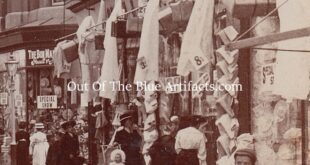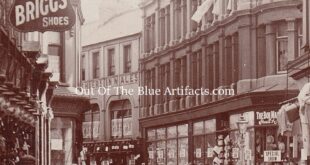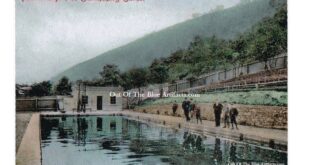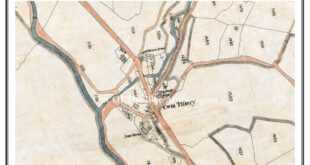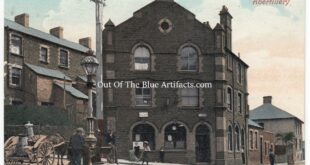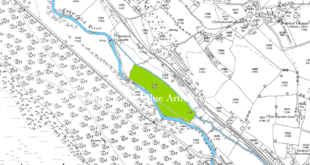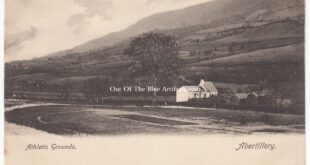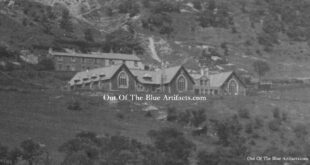The Old Pontlottyn Store. The Pontlottyn Store, Abertillery was originally set up by Mr David Morgan in the mid 1870’s. Mr David Morgan. Mr David Morgan was born in 1833 at Caecrwn, Battle, Breconshire. In the 1850’s, at the age of 23, Mr David Morgan opened his first drapery shops at Rhymney and at Pontlottyn, Rhymney, Glamorganshire. The Abertillery Store. …
Read More »Abertillery History
The Old Bon Marche Store
The Old Bon Marche Store. The Bon Marche Store, Abertillery was constructed in the mid 1880’s and was originally a two-storey building opposite the Medical Hall, on the junction of Cwm Street (later known as Somerset Street) and King Street, Abertillery. Messrs T. Davies and J. H. Powell. From its beginning it was owned by Messrs T. Davies and Joseph …
Read More »The Bon Marche Stores – Abertillery
The Old Bon Marche Store. The Bon Marche Store, Abertillery was constructed in the mid 1880’s and was originally a two-storey building opposite where the Medical Hall is today, on the junction of Cwm Street (later known as Somerset Street) and King Street, Abertillery. Messrs T. Davies and J. H. Powell. From its beginning it was owned by Messrs T. …
Read More »Mr Lionel Falkman 1892-1963
Mr Lionel Falkman 1892-1963. Mr Lionel Falkman, born 1892, was the son of Mr and Mrs Joseph and Annie Falkman, furniture retailers of Abertillery & Llanhilleth. Master Lionel Falkman was a child violinist, a pupil of Mr J. Collier of Abertillery and played many violin solo’s in and around Abertillery on many occasions, one of these was at the Eisteddfod …
Read More »Abertillery Park Outdoor Swimming Baths
Abertillery Park Outdoor Swimming Baths. An outdoor swimming baths at Abertillery Park was first proposed by Mr Arthur Tilney, Councillor of Abertillery. In the late 1890’s, Mr Tilney put his ideas to the council for consideration. Following is a brief story of his fight for, and the construction of, the outdoor swimming baths for the people of Abertillery. Following is …
Read More »Abertillery Iron Works 1832-1839
Mr Richard Walker of the Abertillery Iron Works. Mr Richard Walker was born in 1786 at Lower Sapey, Worcestershire, England. He later came to live at Trevethin, Pontypool, he became an ironmaster and during the early 1830’s he established his own ironworks at Abertillery. Sadly very little is known about him, although he was later listed as being an ironmaster, …
Read More »Abertillery Post Offices
Abertillery Post Offices. The First Post Office – Postmaster. The first post office at Abertillery was on the railway platform, part of the Abertillery Tin Works, adjoining what would become known as Pond House. The first sub-postmaster, sub-postmistress was Mr Edward Jones, a contractor and his wife Mrs Jane Jones, nee Hughes, Abertillery. Mr and Mrs Jones were the parents …
Read More »Abertillery Cricket Club – An Early History
Abertillery Cricket – An Early History. In the 1870’s the Abertillery Cricket Grounds (coloured green on the map above) was originally on the fields where Glandwr St is now built (between the river and the tin works feeder). There is a news report that Abertillery played Ebbw Vale, at Ebbw Vale as early as 1871. The Glandwr Cricket Field was …
Read More »Abertillery Recreational Grounds – The Park
Abertillery Recreational Grounds. In the early days of Abertillery there wasn’t one specific recreational ground for any sport to be played, or for anyone to go and relax, to hold shows or fete’s etc. The population was rapidly increasing, ground being sold off for substantial house building projects and the need for a park or recreation ground was at the …
Read More »The Board Schools Cwmtillery – Cwmtillery Junior Mixed (Cock n Chick School).
The Board Schools Cwmtillery – Cwmtillery Junior Mixed (Cock n Chick School). The Board Schools Cwmtillery – Cwmtillery Mixed School (Cock n Chick School) was situated on the eastern side of Mynydd James (Cock n Chick Mountain) on the western side of the Cwmtillery valley, overlooking Penybont. The school was known and referred to by many names in old reports, …
Read More » Out Of The Blue Artifacts A Library of a lifetime of collecting
Out Of The Blue Artifacts A Library of a lifetime of collecting
